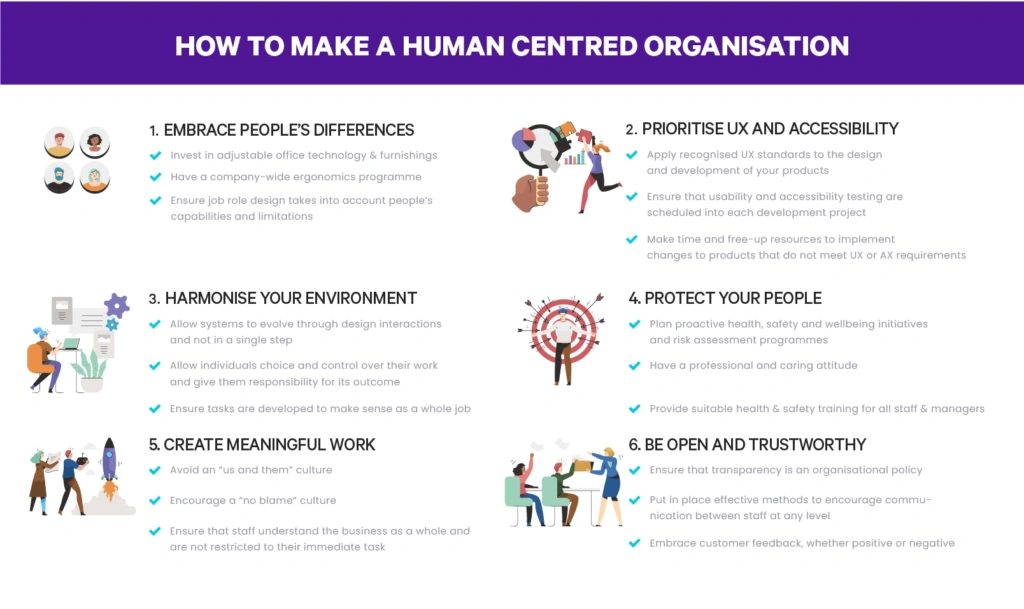
Unlock the Secret to Explosive Business Growth: Discover the Power of User-Centric UX Design for Your Company Today!
Table of Contents
- Understanding Your User
- Defining Your User’s Journey
- Designing Your Product With The User In Mind
- Measuring Success Through Data
- Supporting A User-Centric Culture
- Conclusion
As a CEO, you strive for business growth and success. One key aspect to achieving that is through User Experience (UX) Design. UX Design is a process of creating a product or service that is user-friendly, accessible, and appealing to the user. In this blog post, we’ll discuss how you can drive business growth through a user-centric approach using UX Design.
Understanding Your User
The first step in any successful UX Design is understanding your user. Who are they? What are their needs and wants? How can your product or service fulfill those needs? Without a thorough understanding of your user, you risk creating a product or service they don’t actually want or need.
Identifying your target audience
Start by identifying your target audience. Who is most likely to purchase or use your product? What age group, gender, income level, or geographic location are they in? Once you have defined your target audience, you can begin to create user personas.
Conducting user research
The next step is conducting user research. This can be done through surveys, focus groups, or by analyzing website data and user feedback. User research can help you identify pain points, goals, and preferences of your target audience.
Creating user personas
Based on your research, create user personas. These are fictional representations of your typical user. Include details such as their name, age, job, and hobbies. Use these personas to guide your design decisions throughout the project.
Defining Your User’s Journey
Next, map out your user’s journey through your product or service. What steps do they take to achieve their goal? What obstacles do they encounter along the way? Identifying these pain points and opportunities for improvement is crucial in creating a better user experience.
Mapping out the user journey
Start by creating a visual representation of the user journey. This can be a flowchart or a simple list of steps. Make sure to include every touchpoint the user encounters, from discovering your product to purchasing or using it.
Identifying pain points and opportunities
As you map out the user journey, note any pain points or obstacles the user may encounter. These might include confusing navigation, slow loading speeds, or a lack of information. Also, look for opportunities to improve the user experience, such as personalized recommendations or simplified checkout processes.
Prioritizing improvements based on ROI
Once you’ve identified pain points and opportunities, prioritize them based on their potential return on investment (ROI). This means focusing on the improvements that will have the greatest impact on the user experience while also being feasible to implement.
Designing Your Product With The User In Mind
Now it’s time to create your product or service with the user in mind. This means considering their needs and preferences in every design decision you make.
Incorporating user feedback into product design
Throughout the design process, ask for user feedback and incorporate it into your designs. This can include usability testing, surveys, or a feedback form on your website. Use this feedback to make informed design decisions that will improve the user experience.
Utilizing wireframes and prototypes
Before moving on to the final design, create wireframes and prototypes of your product. These are basic, low-fi designs that allow you to test usability and get user feedback without investing too much time or resources. Use this feedback to iterate and improve your design before moving on to the final product.
Prioritizing intuitive design and user accessibility
Finally, prioritize intuitive design and user accessibility. This means creating a design that is easy to use, with clear navigation and well-organized information. Also, make sure your design is accessible to everyone, including those with disabilities or using assistive technologies.
Measuring Success Through Data
After launching your product or service, it’s time to measure success through data. This means setting up metrics and analytics to track user behavior and feedback.
Setting up metrics and analytics
Start by setting up metrics and analytics using tools such as Google Analytics or Mixpanel. This will allow you to track data such as website traffic, bounce rate, and conversion rate.
Analyzing user behavior and feedback
Next, analyze user behavior and feedback. This can include heatmaps, session recordings, or user surveys. Use this data to identify areas for improvement and adjust your design accordingly.
Making data-driven decisions for future iterations
Finally, make data-driven decisions for future iterations. Use the data you’ve collected to prioritize improvements and make informed design decisions.
Supporting A User-Centric Culture
Finally, supporting a user-centric culture within your organization is crucial in creating a successful user experience. This means creating a culture where the user’s needs are always top of mind.

Fostering a user-centric culture within the organization
Start by fostering a user-centric culture within your organization. This means making user experience a priority and encouraging cross-functional collaboration.
Providing resources and training
Provide resources and training to your team to help them create a user-centric experience. This might include UX Design workshops or access to design tools and resources.
Encouraging cross-functional collaboration
Finally, encourage cross-functional collaboration between teams, such as marketing, design, and development. This will help ensure that everyone is aligned on creating a user-centric experience.
Conclusion
By following these steps, you can revolutionize your business growth through a user-centric approach using UX Design. Remember to prioritize understanding your user, defining their journey, designing with them in mind, measuring success through data, and supporting a user-centric culture.



